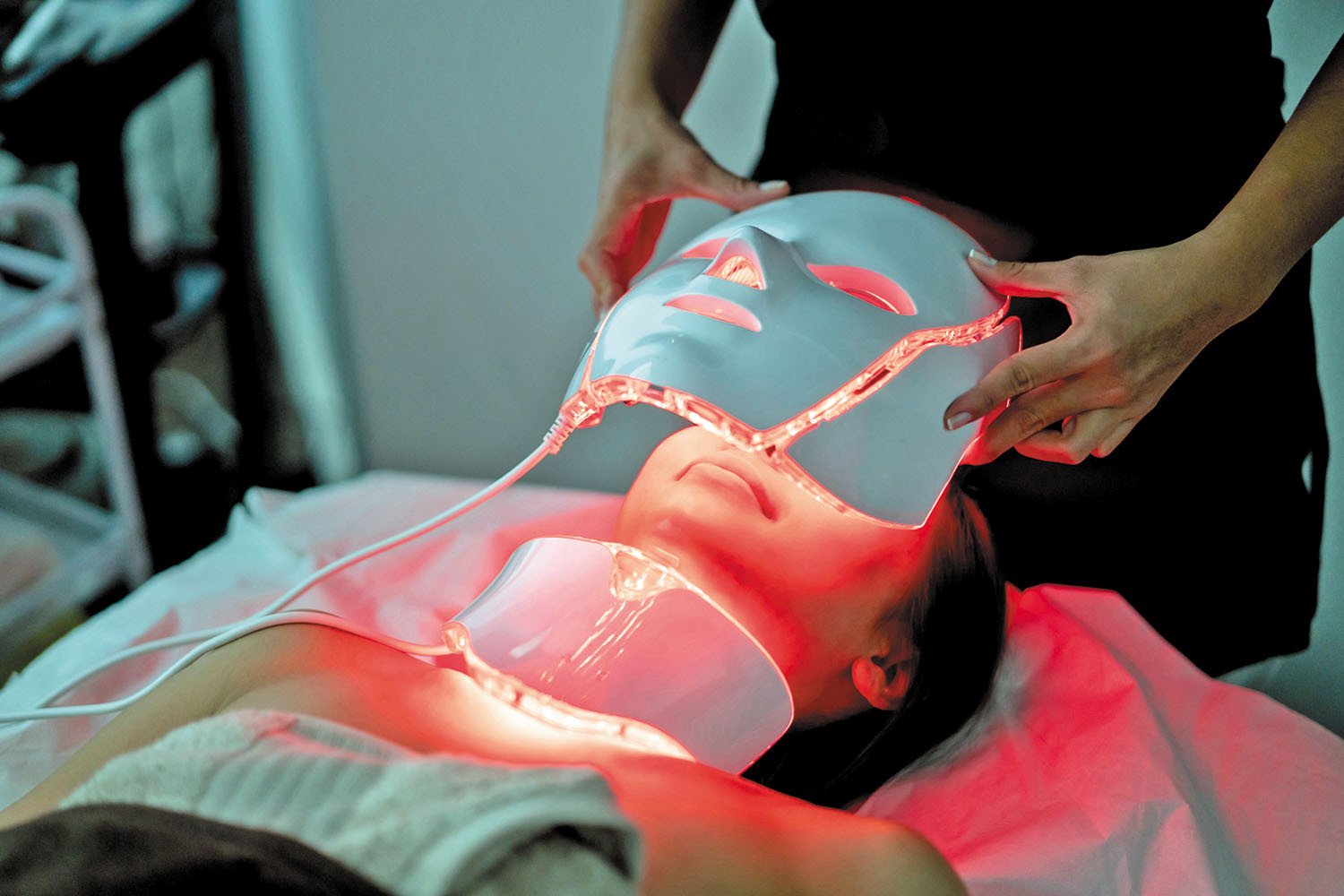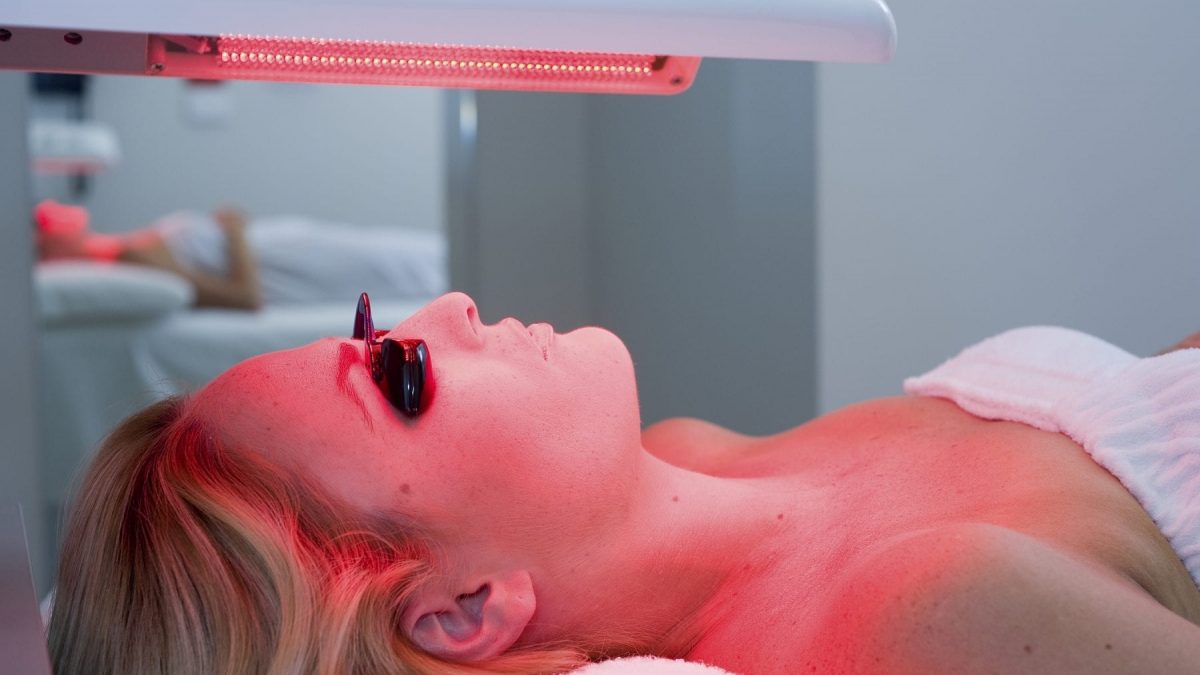Red light therapy may be an excellent cosmetic treatment for acne scars, which might help you achieve a healthy and beautiful look for the skin. Studies showed this treatment might effectively treat wounds, dark spots, hyperpigmentation, or other skin conditions.
Nevertheless, how long should you use red light therapy on your face? The answer to that might be a little complicated. However, we’ll be giving an in-depth look at red light therapy and its effects on the face.
So, let’s get started!

How Long Should You Use Red Light Therapy on Your Face?
When thinking about red light therapy, you should imagine it as an exercise for your cells. Similar to how you can use weightlifting for your muscles and cardio for a healthy heart and lungs.
Just as you wouldn’t expect immediate changes to your physique after going to the gym a few times, you can’t expect red light therapy to take effect after using it once or twice. Hence, you may utilize RLT for 20 to 30 minutes twice or thrice a week.
However, individuals respond to exercise differently; the same goes for red light therapy. So, changes come if you stick with them and persevere, and it’s important not to give up until that point. Even though waiting weeks to see results can be frustrating, patience is the key.
The skin light sensitivity
Red light has been proven to be completely safe to use on the facial region multiple times. Though skin color, tone, and thickness affect how your skin will react to absorbing the red light photons.
People react differently every time, so two people cannot get the same results in the same amount of time. Because of this, it might also be smart to consult a medical professional about how sensitive your skin might be to this type of therapy and how it would react.
Altogether, your body ailment, overall health, and skin type are all factors you need to consider to determine how long you can use light therapy on your face.
Session duration
Participants in one of many studies utilized red light twice a week. It was found that after 30 sessions, the skin issues on their faces showed significant improvements.
After that, less frequent sessions might help maintain skin improvements and provide fantastic anti-aging effects.
Sessions should last somewhere between 10 and 15 minutes each; exceeding that period is not recommended.
Finding the optimal dosing
It’s generally recommended that you experiment with a particular duration and intensity of red light to find the right dosing.
Light intensity, also known as irradiance, is defined by how far the light source is from you. For example, administering treatments for skin conditions around 12″ to 18″ is ideal. But for face treatments, you should keep it at a distance of about 18″ to 24″.
So, when trying to find the right intensity for your treatments, ensure it’s in the margins of that distance. Ensure yourself while wearing some eye protection for light therapy.

About Red Light Therapy
Red light therapy is a treatment that involves photobiomodulation by using LEDs or light-emitting diodes to possibly stimulate cellular activity. It is a form of low-level laser therapy that might help achieve therapeutic benefits.
Red light at a certain wavelength might be beneficial in producing ATP in the cells, a form of energy they use to heal and function. This can lead to cellular changes that might increase collagen production in the skin or help increase the speed at which cells heal.
However, the process doesn’t just involve shining a red light onto your skin. It must be the correct wavelength to produce the desired effects.
Moreover, the treatment is known by other names like LILT (low-intensity light therapy), LLLT (low-level laser therapy), biostimulation, or photobiomodulation.
How does it work?
Everyone remembers from high school biology class that the mitochondria are the cell’s powerhouse. But what does that mean?
Research shows that the mitochondria are responsible for fueling your organs, muscle, skin, and everything functioning. This means that when the mitochondria don’t function properly, your whole body doesn’t.
Similar to how you get nutrients from food, you also get them from light. It’s common knowledge that you get vitamin D from UV light, and avoiding too much sun can lead to health problems.
Also, how blue light affects your circadian rhythm. Both of these lights are found on the spectrum of white light, referred to as “bioactive” light, along with red light, near-infrared, and far-infrared light.
Nonetheless, what does all of this have to do with the mitochondria? When the red light comes in contact with your cells, a biochemical reaction happens within the mitochondria, which may help it use more oxygen to effectively produce energy for the body. This might have reinvigorating effects on the part of the body that’s being treated.
Benefits
Since of the short wavelength of red light, it’s used mostly to possibly treat skin conditions and cosmetic issues like wrinkles, sun damage, wounds, hay fever, scars, acne, stretch marks, and even hair loss. Red light has been shown to possibly promote a healthier, more youthful appearance in the skin.
As time passes, RLT has begun to be used in many different medical applications. It might be used for inflammation in joints and muscles, insomnia, anxiety, and depression. Many professional athletes use it to possibly improve fitness and performance and speed up recovery time.
Moreover, the best part is that the process may not have serious side effects. It’s completely non-invasive and natural, so the treatments are safe. You can ensure yourself if you try some of these best red light therapy devices for the face, which are safe and easy to use.
Red light therapy is being explored as a safe alternative to opioids that might treat and manage pain. However, consulting a doctor before using it is necessary.
To top it all off, the prices of red light devices have lowered considerably in recent years. They used to cost thousands of dollars and could only be afforded by luxury spas. Now, anyone can own one in their home for a fraction of the price.
Conclusion
So, how long should you use red light therapy on your face? The answer might not be so simple if you’re wondering about that.
Generally, when treating a condition on your face’s skin, you should administer a red light at a distance of 18″ to 24″, with sessions lasting 10-15 minutes.
The number of sessions necessary depends on factors like the ailment and the natural conditions of your skin. If used properly, red light is proven completely harmless, and it’s very hard to damage your health with it.
The best course of action is to keep in touch with a medical professional. If you’re doing treatments at home by yourself, always follow the recommended distance and time.

Hello! I’m Nicky Rodgers.
Almost a decade ago, I got excited about the idea of employing alternative methods like red light therapy to create a healthier life.
To learn more about it, I did my Certified Light Therapist course from Photonic Therapy Institute and started looking into the intricacies of how light therapy influences several bodily processes. Before I knew it, my interest had become an obsession which resulted in this extensive blog.
Here, I offer countless well-researched articles to help you understand the benefits and uses of light therapy. I hope this information gives you a head start in your wellness journey.
